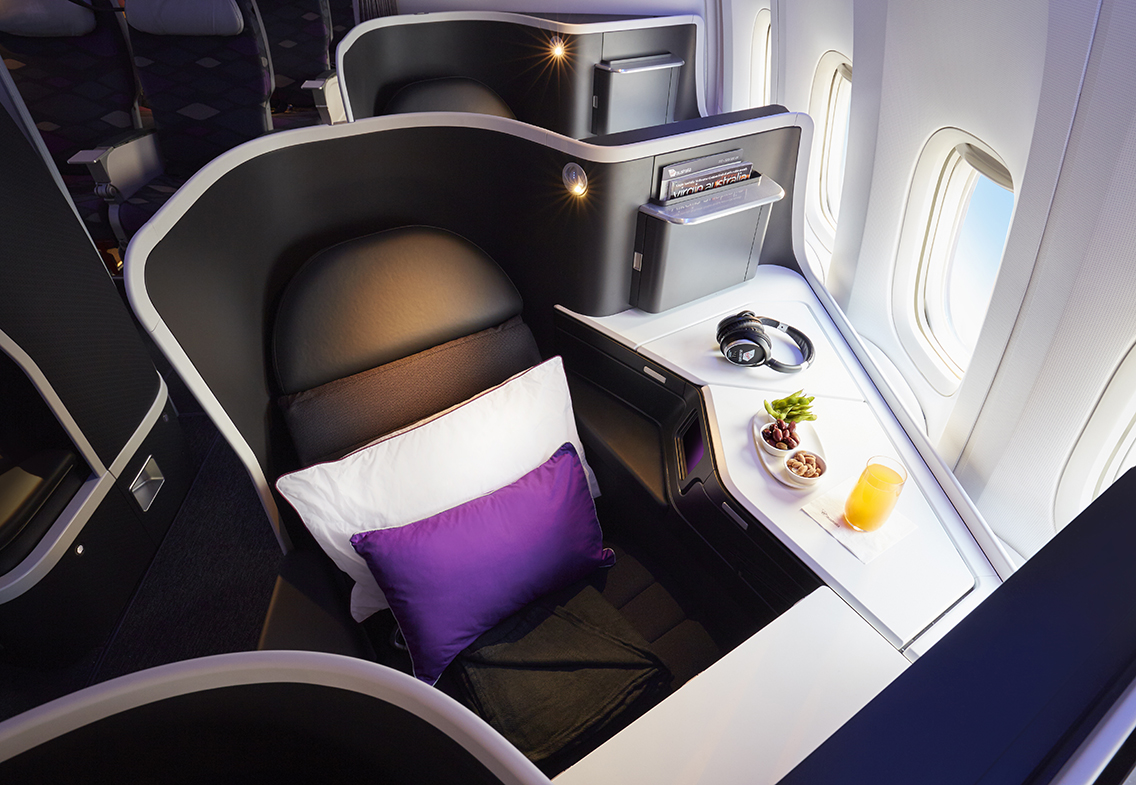With the stage set for the next decade of business class seats, the effects of the last few rounds of seat maker consolidation are still being felt.
By and large, replacing business class seats is a slow and often frustrating process, as many airlines have made very clear in recent memory. There’s something of a feeling among airlines that want to differentiate themselves via passenger experience that very few of the existing options are forward-thinking or future-proofed enough, so the bespoke seat is seeing a resurgence.
Read: The World’s Best Airlines for 2019
The field is largely split into two big categories: those seats with direct aisle access for every passenger, avoiding the inelegant gazelle-like bound or hippo-like clamber over aisle seat neighbors, and those seats without.
Direct aisle access these days is provided either by a herringbone or a staggered configuration, which can be broken down a number of ways.
Herringbones are either inward-facing like the seminal 2003 Virgin Atlantic seat also used by Air New Zealand that later inspired the Contour (now Zodiac) “pod” on Air Canada, Delta, Cathay Pacific and others, or outward-facing like the 2008 Sicma (now Zodiac) Cirrus that débuted on US Airways and was so successfully developed by Cathay Pacific, and is now widely installed. Other outward-facing herringbones include Rockwell Collins’ popular Super Diamond (Virgin Australia’s “The Business”), Jamco’s more recent Venture/DoveTail, and the prototyped Stelia Comet.
Staggered seats with direct aisle access vary. The most familiar may be the Thompson Vantage XL used on Qantas’ latest “Business Suite” and elsewhere. Also widely installed is the Stelia (formerly Sogerma) Solstys, as seen on Etihad’s 777s, Asiana, and some Hong Kong Airlines aircraft.

Zodiac’s SKYlounge, best known as Emirates’ customized A380 business class, also appears on ANA’s long-haul flights, while Aviointeriors also offers a similar product. Etihad’s two-manufacturer forwards-backward staggered Business Studio also fits in this category, as do the two suite products, Thompson’s Vantage XL+ (AKA Delta ONE Suite) and the Rockwell Collins-manufactured Qatar Airways Qsuite.
The newest generation of compact staggered seats is also making something of a splash, with Zodiac’s Optima (the basis of United’s Polaris seat, slowly rolling out across the airline), Recaro’s CL6710, and Stelia’s Opal advancing strongly into markets where density is particularly crucial.

Below that first rank of seats are the fully flat beds that lack direct aisle access: Thompson’s first-generation Vantage, for example, where only on the 767’s very narrow fuselage do some passengers not need to hop over a neighbor. Rockwell Collins’ Diamond, too, has been and continues to be popular as a fully flat option. Rockwell’s latest Emirates 777 seat (which I believe is called Falcon), Zodiac’s Aura and Jamco’s Journey are less dense but still, require that “midnight clamber”.

There are spoilers, too: the old B/E Aerospace (now Rockwell Collins) Minipod is still flying, as is the British Airways 2006-era Club World seat manufactured by the same company. Emirates still uses ancient angled lie-flat seats on the majority of its 777s, while Stelia’s “stacked” Equinox 3D and Zodiac’s stacked Aries (JAL’s Sky Suite III) may well prove popular too. Italian seat maker Optimares’ Maxima débuted on Hawaiian Airlines and has recently been seen on Hong Kong Airlines, while Boeing this year started working with automotive seat maker Adient, and other new entrants to the field are expected too.
The regional market, in particular, is likely to see a substantial amount of change in the medium term, as angled lie-flat seats like Singapore Airlines’ old Weber 7811 and recliner-plus seats like Cathay Pacific’s custom business class lose their lustre as newer products like Singapore Airlines’ shine. Getting the balance between density and space perception for ever-demanding passengers is the next big challenge.
























